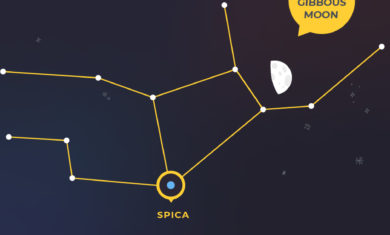Adler Skywatch: February 2023
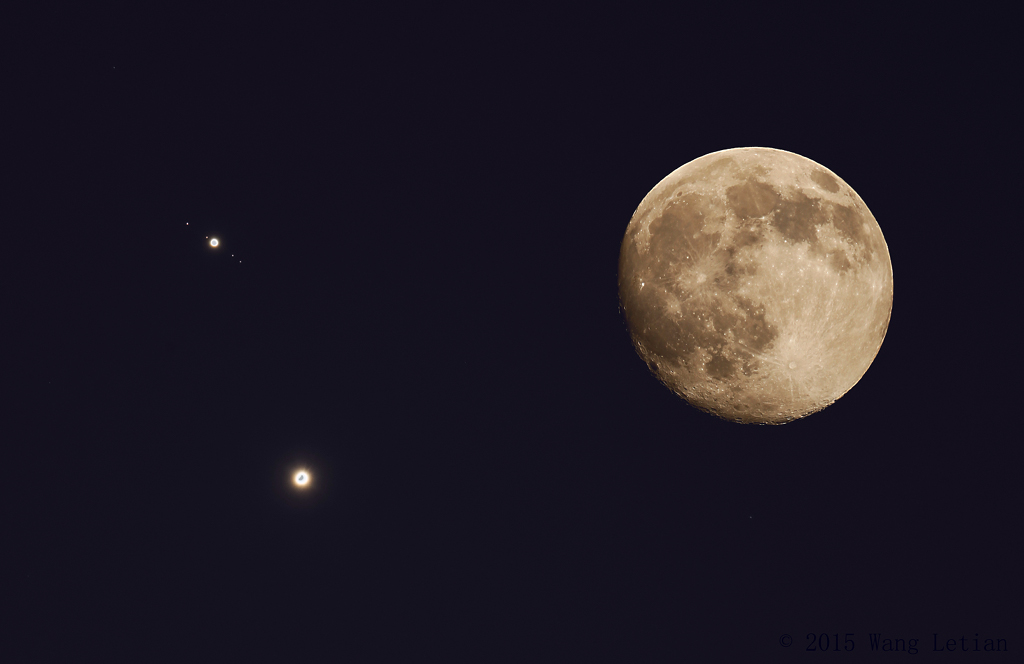
Header image: The bright planets, Venus and Jupiter, are close in the sky, nearby a bright Moon. Image taken on June 30, 2015. Composite image credit and copyright: Wang, Letian
The two brightest planets and a once-in-a-lifetime comet are among the sky highlights of the shortest month of the year, February 2023. Here’s your stargazing guide to view this month’s celestial events.
Hey There, Comet C/2022 E3 (ZTF)
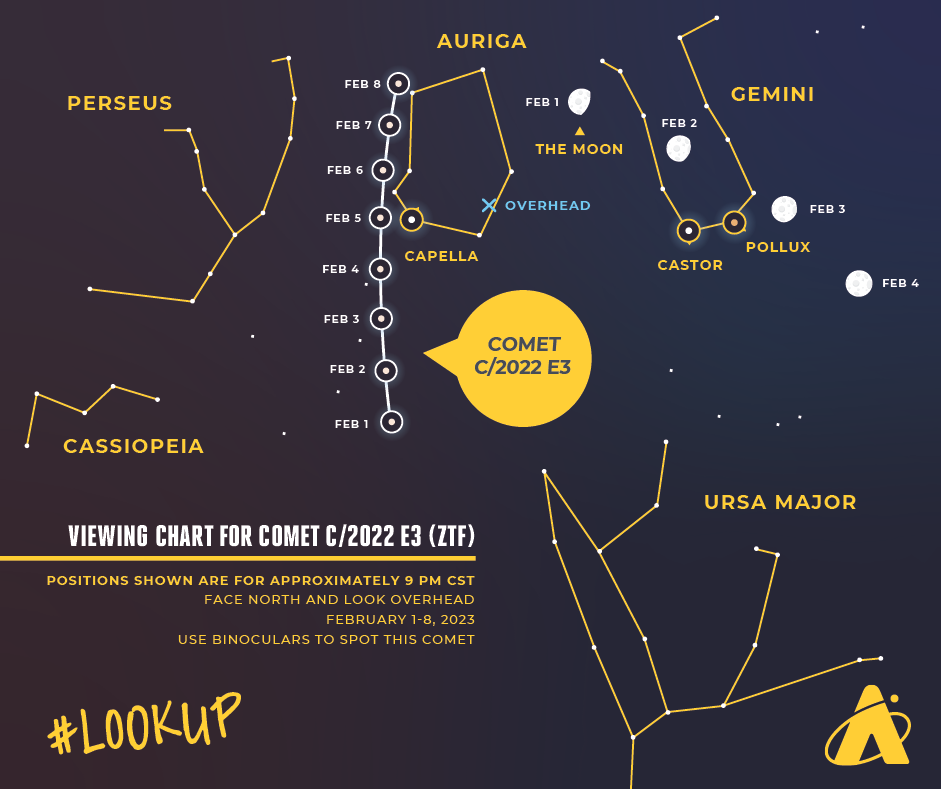
Comet C/2022 E3 (ZTF), informally called the “Green Comet”, recently made its closest approach to the Sun, after having traveled tens of thousands of years from the far fringes of the solar system. It’s forecast to be brightest around February 1, at just slightly brighter than 5th magnitude when the comet is at its closest point to Earth. But don’t worry, as you are gazing at this cosmic fuzzball, there’s no threat of it crashing into Earth, as it will be 26 million miles away from us at its closest approach.
Around 6th magnitude is the faintest an object can be seen without optical aid in a very clear, very dark sky. A comet that dim won’t look like popular photos of comets. It will be more like a faint, fuzzy glow or smear of light. Under a city or suburban sky, you’ll need binoculars or a small telescope to actually see this comet. Even far from city lights, you’ll likely still need binoculars because when the comet is brightest, the bright Moon will be in the sky at the same time, making viewing more difficult.
Venus and Jupiter: A Dazzling Duo
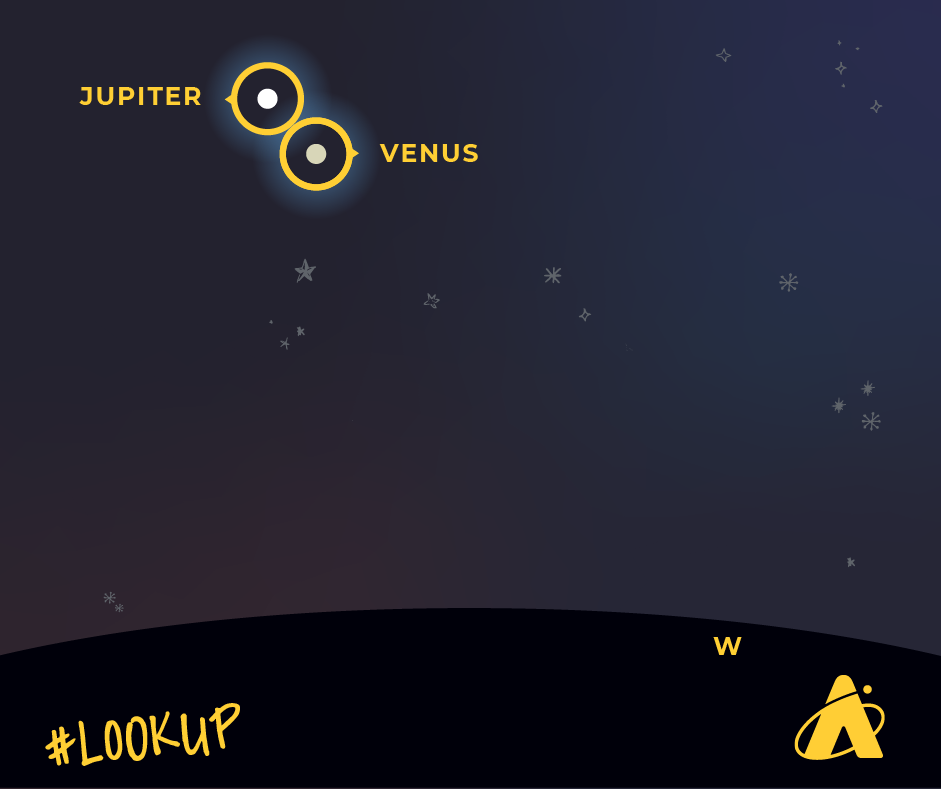
An hour or so after sunset, look low in the southwest sky to see Venus and Jupiter. Their brightness makes them easily visible, dazzling in the early evening twilight. Venus is the lower and the brighter of the two planets. The planetary pair start the month about 30 degrees apart. As the month goes on, they appear to move closer together each night. By the end of the month, the two appear only about one degree apart in the southwest sky. In reality, the two planets are over 400-million miles apart in space.
The evening of February 21, Venus appears only about five degrees above a barely visible, waxing crescent Moon. The evening of February 22, that crescent Moon appears just to the left of Jupiter.
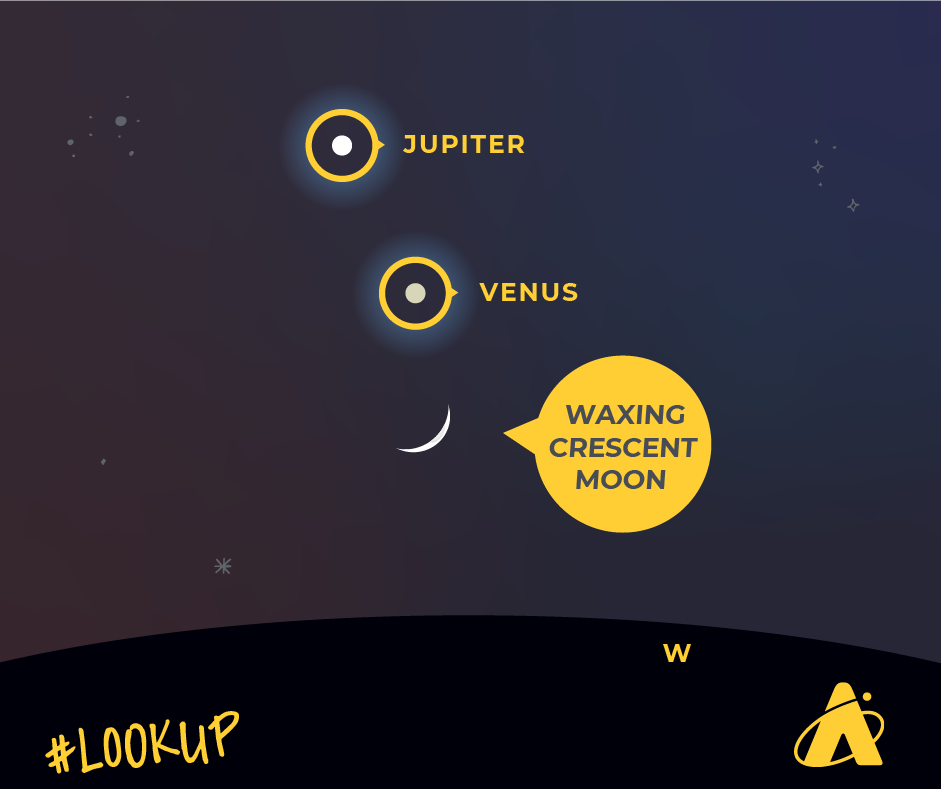
At the beginning of the month, Venus sets in the west-southwest around 7:00 pm, and around 7:30 pm by the end of the month. Jupiter sets nearly due west at about 9:00 pm early in the month. By month’s end, Jupiter sets with Venus around 7:30 pm.
Mars, Betelgeuse and Aldebaran
Having reached its brightest back in December, the planet Mars is getting noticeably dimmer as the months pass. However, it’s still high in the early-evening sky, distinctively reddish, and brighter than any star inside a 20-degree radius. Roughly 20 degrees below and a bit east of Mars is Betelgeuse, the reddish star that marks the left-shoulder of the constellation Orion the Hunter.
Another star near Mars, roughly ten degrees below and slightly west, is Aldebaran, the reddish eye of the constellation Taurus the Bull. Early in the month, Mars easily outshines Betelgeuse and Aldebaran but by month’s end, Mars appears only slightly brighter than either of the two stars. Mars sets in the west-northwest around 3:00 am at the start of the month, and at about 2:00 am by month’s end.
Mercury and Brighter Mornings
The first few mornings of this month, those with a clear sight-line to the east-southeast horizon may be able to spot the planet Mercury rising shortly before dawn. However, with the Sun rising earlier each morning this month, Mercury will be difficult, if not impossible, to see in the increasingly bright sky. Similarly, the planet Saturn appears too close to the Sun this month to be visible. As always, stop looking before the Sun reaches the horizon, or you risk permanent eye damage.
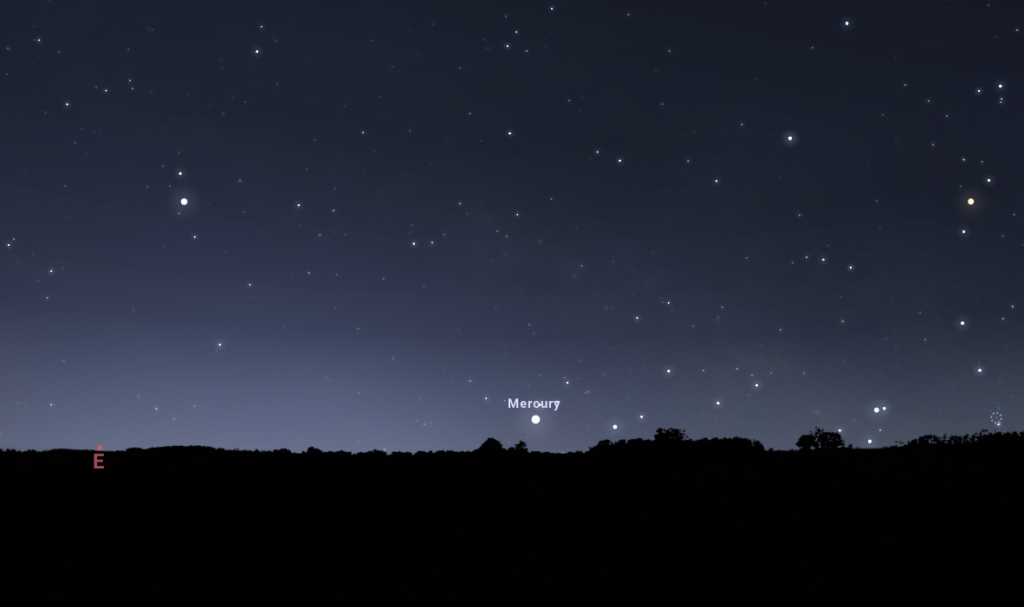
MOON PHASES
Full Moon: February 5
Last Quarter Moon: February 13
New Moon: February 20
First Quarter Moon: February 27

Please note: these descriptions are for the Chicago area, using Central Standard Time.
Subscribe To Skywatch Wednesday This February!
Tour the night sky with the Adler Planetarium’s Theaters Manager, Nick, who uses cutting edge visualizations, NASA images, and astrophotography to show you what you can see in the night sky throughout the year.
Check out our recent episode for an astronomical tour of the 2023 winter night sky.
Learn From Our Astronomy Educators
Watch exclusive live episodes of Sky Observers Hangout this February! Learn how to observe upcoming cosmic happenings, enhance your astrophotography skills and see celestial objects through a telescope virtually with our astronomy educators. Watch the recap of the Green Comet Live episode!





